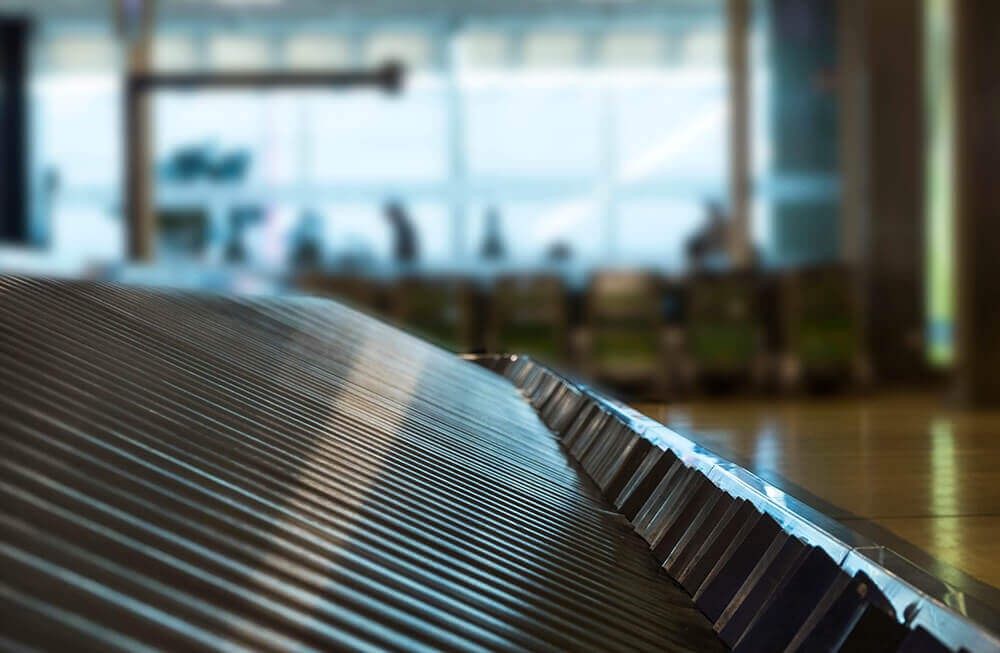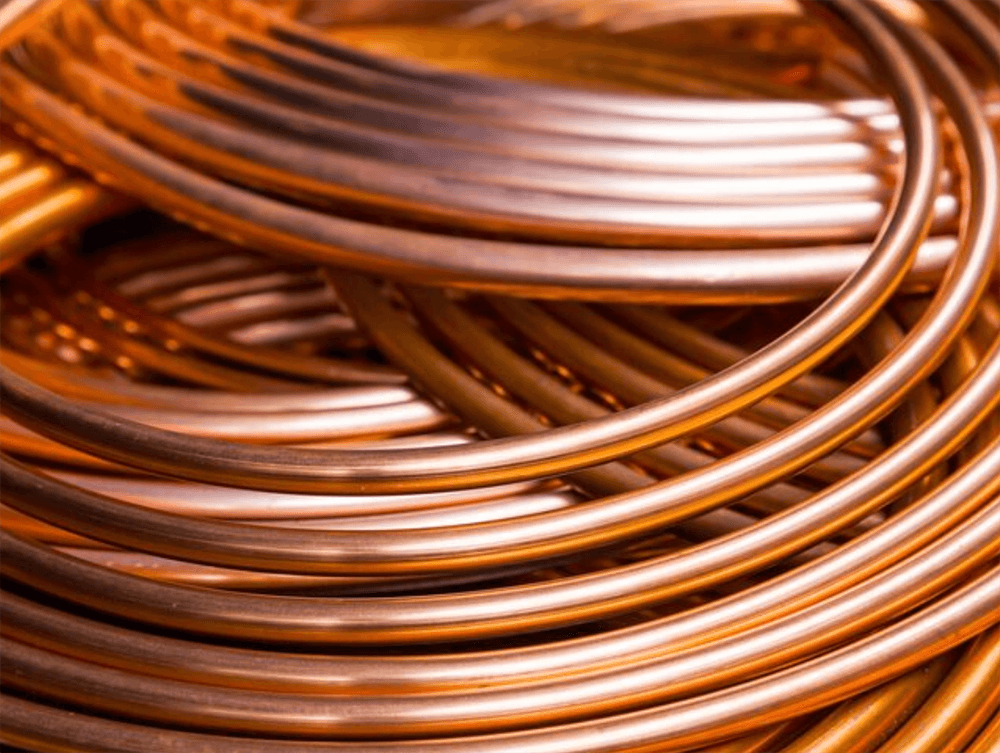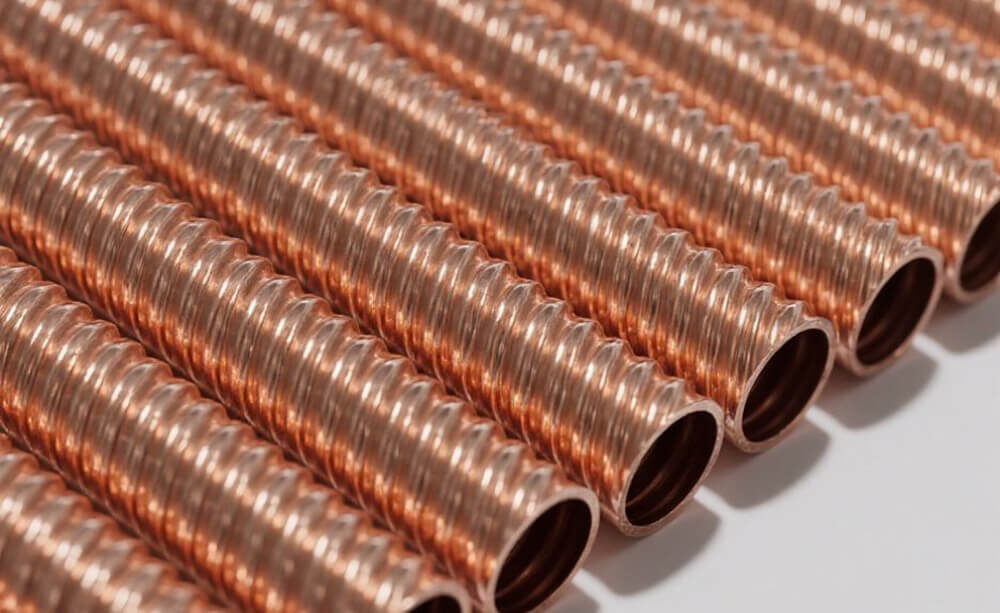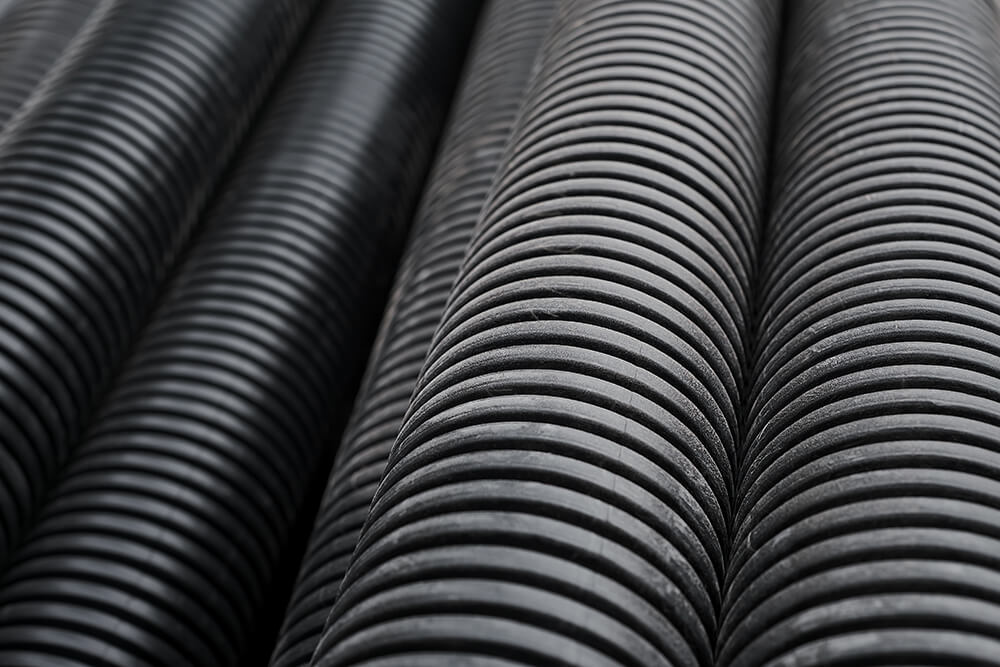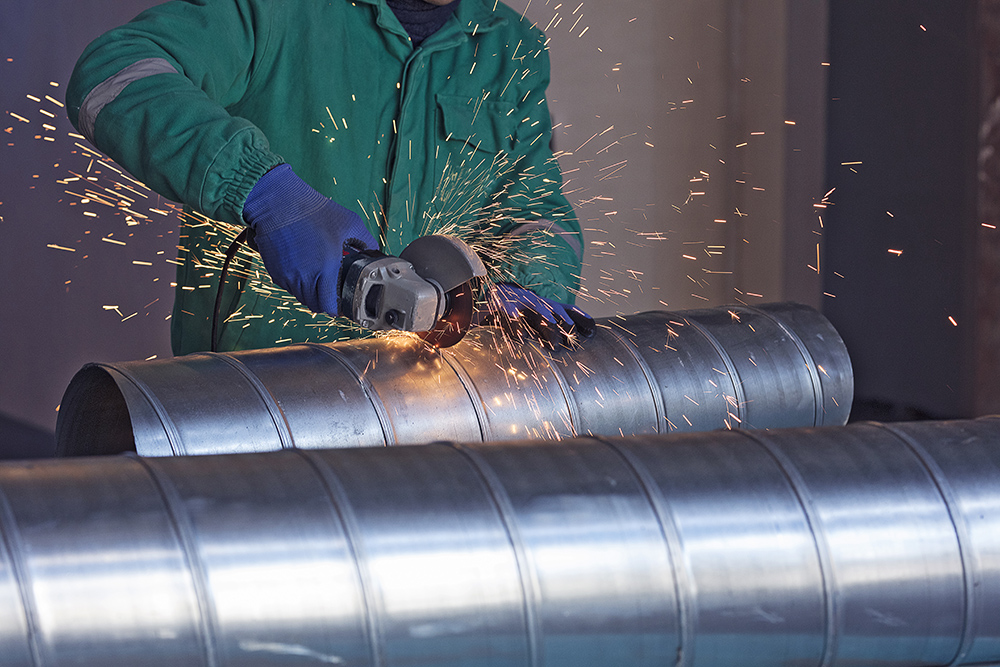Different manufacturing processes
- Welding Process of High-Frequency Welded Fin Tubes:
A continuous fin strip (often steel) is helically wound around the base tube. High-frequency electrical current is then applied to the fin and tube. The skin effect and proximity effect of this high-frequency current heat the materials until they reach a plastic or melting state. Welding is completed under pressure. This is considered a solid-phase welding process.
- Welding Process of Laser Welded Fin Tubes:
A high-intensity laser beam is used to melt the surface of the metal, creating a weld between the fin and the tube. The process is often carried out under a protective atmosphere.
The Respective Strengths
High-Frequency Welded Fin Tubes:
- Welding Process: A continuous fin strip (often steel) is helically wound around the base tube. High-frequency electrical current is then applied to the fin and tube. The skin effect and proximity effect of this high-frequency current heat the materials until they reach a plastic or melting state. Welding is completed under pressure. This is considered a solid-phase welding process.
- Fin Attachment: The fin is wound on edge around the tube, and a continuous weld is obtained.
- Heat Affected Zone : HFW has a fast welding speed, limiting the heat-affected zone.
- Materials: Typically uses carbon or stainless steel fins.
Laser Welded Fin Tubes:
- Welding Process: A high-intensity laser beam is used to melt the surface of the metal, creating a weld between the fin and the tube. The process is often carried out under a protective atmosphere.
- Fin Attachment: Pre-fabricated fin strips are attached to the tube surface.
- Heat Affected Zone : Laser welding eliminates heat-affected zones due to localized heat input.
- Materials: Can use various materials, including stainless steel, copper, aluminum, and titanium. This allows for a greater range of material combinations for both the tube and fin. The skin effect and proximity effect of this high-frequency current heat the materials until they reach a plastic or melting state. Welding is completed under pressure. This is considered a solid-phase welding process.
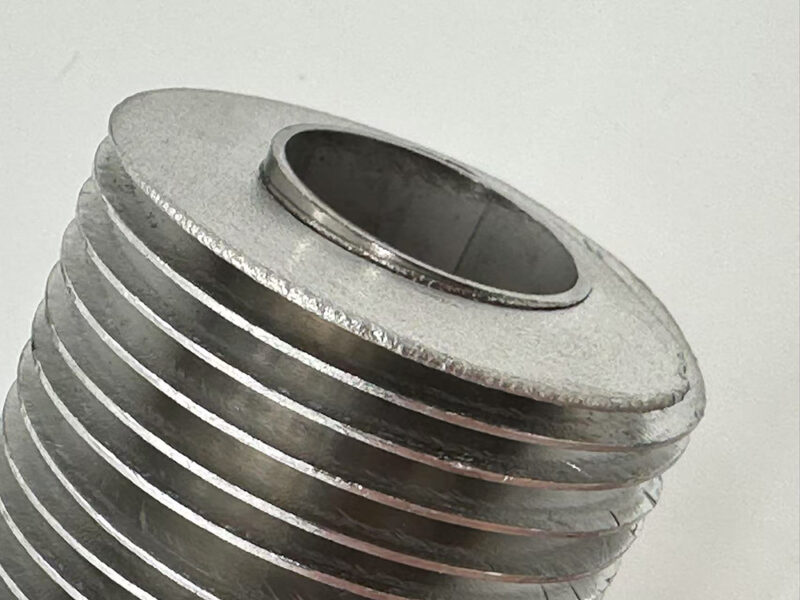
The Parameter Differences
High-Frequency Welded Fin Tubes:
- Welding Power Supply: Generally 300KW.
- Maximum Rotational Speed of the Spindle: Up to 300r/min.
- Steel Pipe Diameter Range: φ25~φ168mm.
- Steel Pipe Thickness Range: 1~10mm.
- Fin Height: 8~20mm, 8 to 35 mm.
- Fin Thickness: 0.5 to 3.5 mm, 0.8~0.25mm, 0.3-0.5mm.
- Fin Pitch: 3 to 333 FPM (1 to 8 FPI), 4~10mm.
- Welding Line Speed: 35m/min.
- Tube Outer Diameter: 15.88-165mm, 16 to 273 mm.
- Tube Wall Thickness: 2 to 28.6 mm.
- Tube Length: ≤28,000 mm.
- Materials that can be welded: carbon steel, low-carbon steel. Base pipe material includes ASME SA213/ASTM A213 TP304/304L TP316/TP316L TP321 TP310S TP317, ASME SA106/ASTM A106 Gr B Gr C, ASME SA179/ASTM A179, ASME SA192/ASTM A192. Fin material includes alloy steel, stainless steel, carbon steel, duplex, and super duplex.
- Frequency: Usually employs a frequency of 400 kHz.
Laser Welded Fin Tubes:
- Tube Outer Diameter: Φ10 to Φ45mm, 8 – 50 mm.
- Tube Thickness: Varies depending on the tube OD, ranging from >1.0mm to >2mm, Tube all thickness = 1,5 mm.
- Fin Pitch: 2-10mm, 5 – 13 fins/inch. The fin pitch can vary on the tube length.
- Fin Height: <5mm to <23mm, depending on tube OD, 5 – 17 mm.
- Fin Thickness: 0.3-1mm, 0,4 – 1,0 mm.
- Maximum finned tube lengths: 12,000 mm.
- Materials that can be laser welded: stainless steel+stainless steel, stainless steel+carbon steel, stainless steel+copper, carbon steel+carbon steel, carbon steel+copper, copper+copper.
Key Differences in Parameters:
- Fin Pitch: Laser welded fin tubes can achieve finer fin pitches, and the fin pitch can vary on the tube length.
- Fin Height: Laser welded fin tubes can have fin height from 5 – 17 mm while HFW fin tubes can achieve fin height from 8 to 35 mm.
- Fin Thickness: Laser welded fin tubes typically have fin thickness between 0.3-1mm while HFW fin tubes have fin thickness from 0.3 to 3.5 mm.
- Materials: While both processes can handle various materials, laser welding offers the possibility of welding different materials for fin and tube.
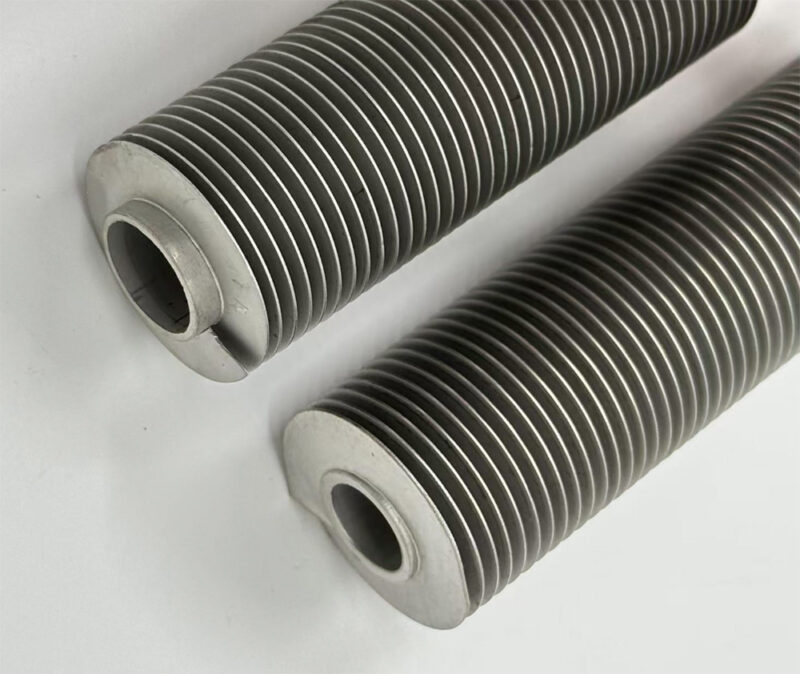
The Application Differences
High-Frequency Welded Fin Tube Applications:
- Heat Recovery Systems: Widely used in heat recovery of boiler economizers, air preheaters, and waste heat boilers.
- Power Generation: Used in heat recovery associated with boilers and gas turbines for power generation.
- Petrochemical Industry: Utilized in furnace applications and heat exchangers in various fields such as chemical and pressure vessels.
- Waste Heat Recovery: Commonly employed for waste heat recovery in electric power, metallurgy, cement industry, and petrochemical industry.
- Air Coolers: Used in air coolers, charge air chillers, condensers, evaporators, fluid coolers, gas coolers, oil coolers, radiators, refrigeration, steam to air heat exchangers, and superheaters.
- HVAC: Applications in HVAC systems.
- High-Temperature and High-Pressure Applications: Well-suited for high-temperature and high-pressure applications due to the efficient and effective bond of fin to tube.
- Vibrating Conditions: Due to the tight welding of the fins to the base tube, these finned tubes are often used in vibrating conditions.
Laser Welded Fin Tube Applications
- Power Plants: Used in power generation facilities.
- Chemical Industry: Employed in chemical processing plants.
- Heat Recovery Plants: Utilized in systems designed for heat recovery.
- Heating Industry: Used in heating systems.
- General Engineering: Applied in various general engineering applications requiring heat transfer.
- Boilers: Used in boilers. Laser welded finned tubes offer significant advantages in boiler applications due to their superior heat transfer performance.
- Wall-Hung Boilers: Used in wall-hung boilers.
- Ships: Employed in marine applications.
- Waste Heat Power Generation: Utilized in systems for waste heat power generation.
- Home Improvement: Applied in home improvement projects.
- Cooling towers: Used in cooling towers or cooling water re-cooling plants with dry, dry / wet or wet operation.
In conclusion, laser welded fin tubes offer advantages in material cost, welding quality, material adaptability, secondary processing capability, and heat-affected zone size, making them suitable for applications requiring efficient and precise welding.

